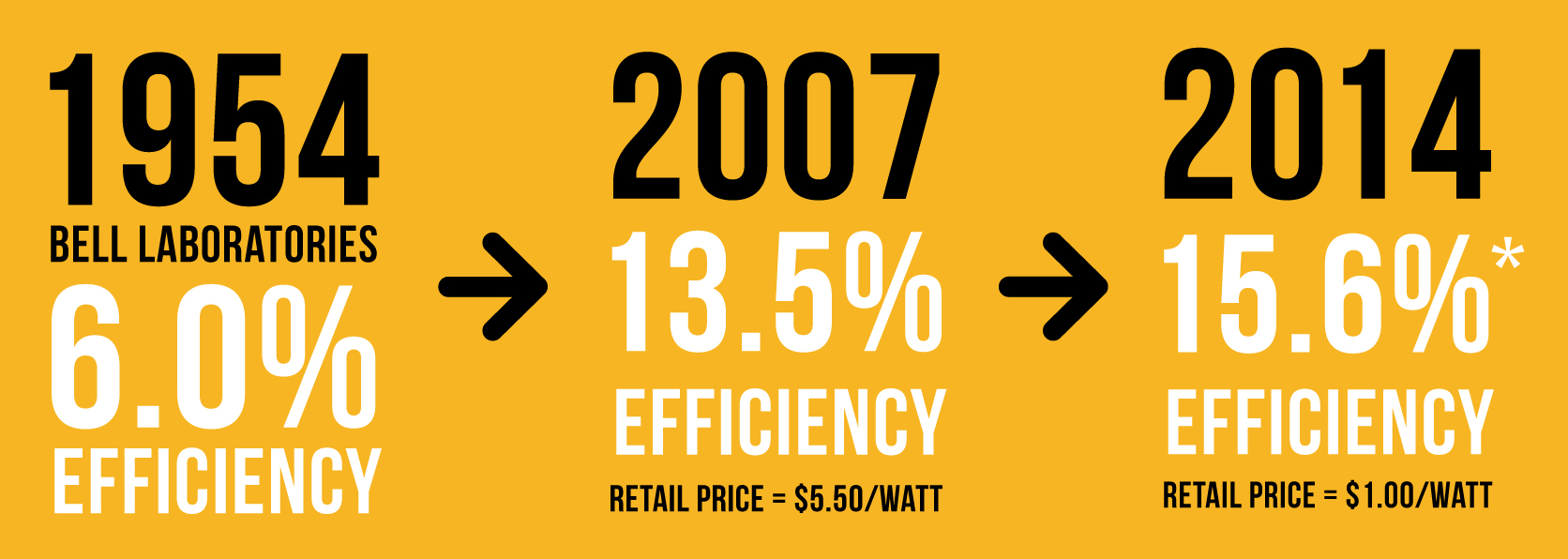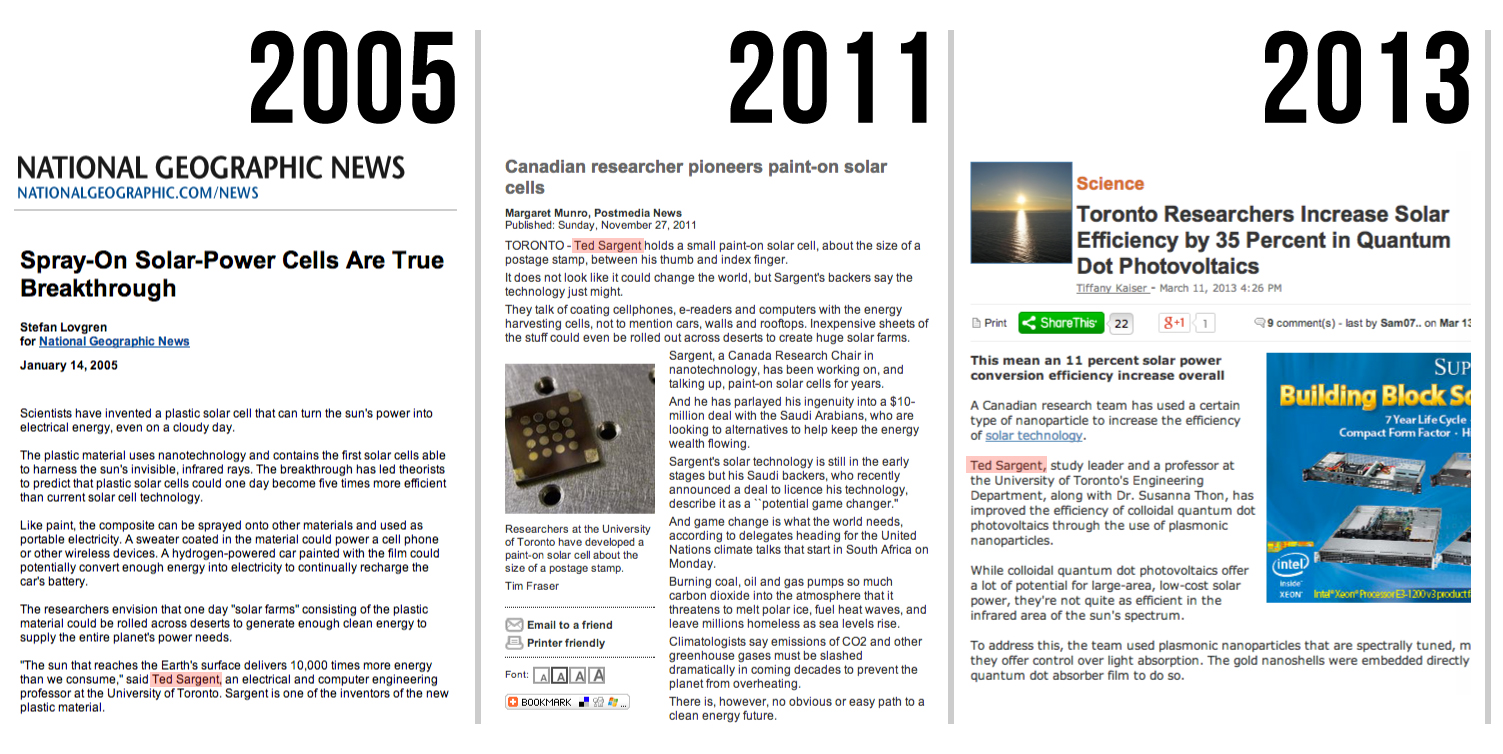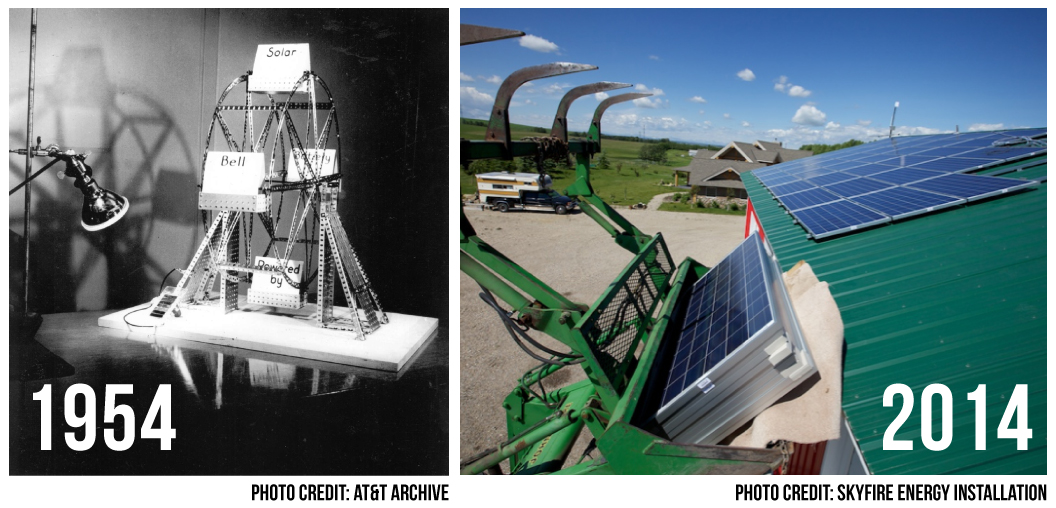Crystalline Silicon is still going strong, 60 years later.
If there’s one question about solar that gets asked more often than others, it’s definitely this:
“What is the efficiency level of solar modules today?”
Many consumers are constantly under the impression that they should wait to install solar on their homes or businesses because they believe the efficiency level of solar modules/cells is bound to increase dramatically over the next few years due to emerging solar technology. While there are many bright solar research ideas out there, how many of them have actually been implemented and sold commercially?
Here’s an example of a solar “breakthrough” that has been repeatedly reported in the news over the years but to date, has not reached its projected efficiency level nor has it been sold commercially. Back in 2005, there was an article by National Geographic about spray-on solar power cells. These plastic solar cells would use nanotechnology as well as contain the first solar cells able to harness the sun’s invisible infrared rays. Like paint, the composite could be sprayed onto other materials and be used as portable electricity. Theorists even went as far as to predict that these plastic solar cells could become five times more efficient than current solar cell technology. Six years later, in 2011, there was an update that these spray-on/paint-on solar cells were still being developed for commercial usage and that the highest efficiency level they managed to achieve was 6% (Crystalline Silicon PV technology had already reached more than 14% by then).
New solar cell technology also needs to be cost competitive in order to compete with existing solar technology as well as other renewable and non-renewable energy sources. There are several key factors for creating cost-efficient solar cells, which include fabrication cost, efficiency and lifetime of the cells.
And that is why Crystalline Silicon is still winning 60 years later!
First made in the 1950s, Crystalline Silicon is the oldest, most common PV technology. Typically black or blue, these make up the PV arrays that people are accustomed to seeing on rooftops today.
Steady product development and manufacturing efficiency improvements have been made to Crystalline Silicon PV technology over the decades which has resulted in cost effective solar modules with good efficiency levels.

*The efficiency level of Conergy solar modules is 15.6%. Higher efficiency solar modules are commercially available at a slight premium from SolarWorld (16.4%), LG (18.3%) and SunPower (21.2%).
As you can see in the info graphic above, the cost of crystalline has also reduced dramatically over the last few years since there is an abundant supply and many of these modules are now made in China. Furthermore, most Crystalline Silicon PV modules have warranties of 25 years or more from established companies, making it not only an affordable investment but a reliable one too.
Even thin-film modules are no match for Crystalline Silicon PV modules as Crystalline is 25%-30% more efficient. Therefore, during peak hours, you could expect to produce more power with fewer crystalline modules in less area and usually with lower installation costs as well.
So if you are still waiting for the next big thing, it was created 60 years ago and it is still the technology of choice today!



